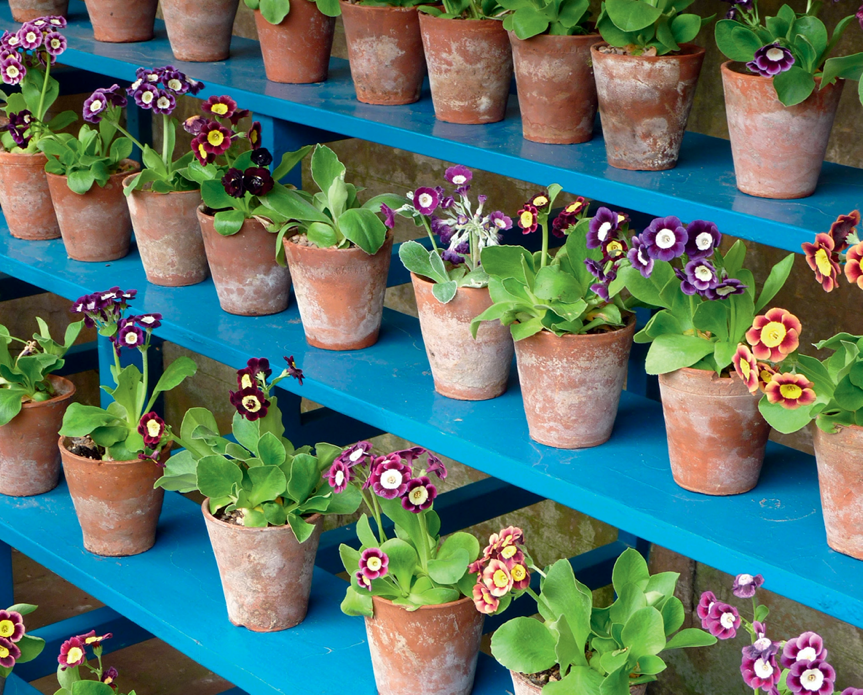Alan Titchmarsh: I'm not a garden obsessive — but if I were, these are the plants that would take over my thoughts
I'm not an obsessive, pleads Alan Titchmarsh, but just an enthusiast — and he tells us which plants he's most 'enthusiastic' about over the course of a year.


When does a passion become an obsession? Are the two things inseparable? I remember, when working as a student at Kew Gardens in the late 1960s, the elfin-like gardens supervisor in charge of the cactus and succulent department wagging his finger at those of us who showed a predilection for one particular genus of plants and warning us that ‘Specialisation leads to extinction!’ But then, I suppose he was speaking from personal experience. He knew nothing at all about dahlias.
Yet, without specialists, without those who become obsessed with their charges, we would not accrue nearly as much information about particular groups of plants and neither would we enjoy such diversity within their ranks, for it is the specialists — the obsessives — who notice a particular change in plant form, colour or habit and do their bit to help them survive. Although turning our backs on a comprehensive plant collection might lead to neglect of the bigger picture, the reality of the matter is that there are enough of us with interests in particular groups of plants to contribute to the wellbeing of the whole.
It seems to me that a balanced view of biodiversity is what makes sense. It is impossible for each and every one of us to grow everything in our gardens, but when all of our individual collections are taken into account, the biodiversity becomes reality. Those invaluable members of Plant Heritage who cherish national collections of one particular species will understand exactly what I mean.
It would be easy to assume that an obsessive nature, where plants are concerned, is the province of the male of the species. Not so. Some of the best specialists I have encountered in my gardening life have been women. I hesitate to name names, but I have met the female of the species with an unrivalled knowledge of alpine plants, irises, ivies, silver-foliage plants and… well, the list goes on.
So to the confessional. What are my own enthusiasms? (Neatly side-stepped, you see: enthusiasms rather than obsessions.) Obsessions do imply an uncontrollable urge to accrue yet more and more of a single genus or species and an unease if one particular type is elusive and remains beyond our grasp. I would not describe myself as having gone that far, but I do enjoy 25 pots of individual varieties of auricula, for instance, which have given me enormous pleasure this spring.
It may have something to do with the fact that they are all growing in handsome 4in terracotta pots and I can arrange them neatly in a cold greenhouse, where they are protected from the weather, but not offered any heat. I admire them and pick over them rather like Fagin sifting through the jewels in his hidden casket. Their delicacy and intricacy, the distinctive rime of their leaves and petals, I find entrancing. But I probably have enough. Well, perhaps there’s room for one or two more next year.
Then there are the scented-leaved pelargoniums. I have been captivated by these since I was a boy and can offer you a tour of my greenhouse and your own olfactory senses as I present you with the aroma and fragrance of peppermint, roses, Coca-Cola, lemon, orange, chocolate peppermint and heaven knows what else. The list is comprehensive and the plants so pleasing and easy to grow and propagate from cuttings that they make great gifts for friends who are amused and amazed by the variety of fragrances on offer. Here is something that even non-gardeners can grow on a sunny windowsill.
Exquisite houses, the beauty of Nature, and how to get the most from your life, straight to your inbox.
Some plants are renowned for their ability to engender obsessiveness; none more so than the snowdrop. Galanthophiles are thick on the ground in this country, so much so that there are getting on for 1,500 different named varieties of the plant to add to your collection. I bought another four this spring, but have decided that this sort of thing must really stop now that I have given home to just under 50 varieties. That’s enough, for goodness sake!
Oh, I nearly forgot the hostas — about 60 of them, but they give me so much pleasure as the year unfolds. It begins with snowdrops, the auriculas follow, then the hostas. The scented-leaf pelargoniums take me on through the summer, with other inhabitants of my garden that are present in more modest numbers. In my own case, specialisation has not led to extinction, merely to a huge amount of pleasure in looking closely at the wondrous variations in a few groups of plants that tickle my fancy. Obsessive? Let’s stick with enthusiastic.
Alan Titchmarsh is a gardener, writer, novelist and broadcaster.
